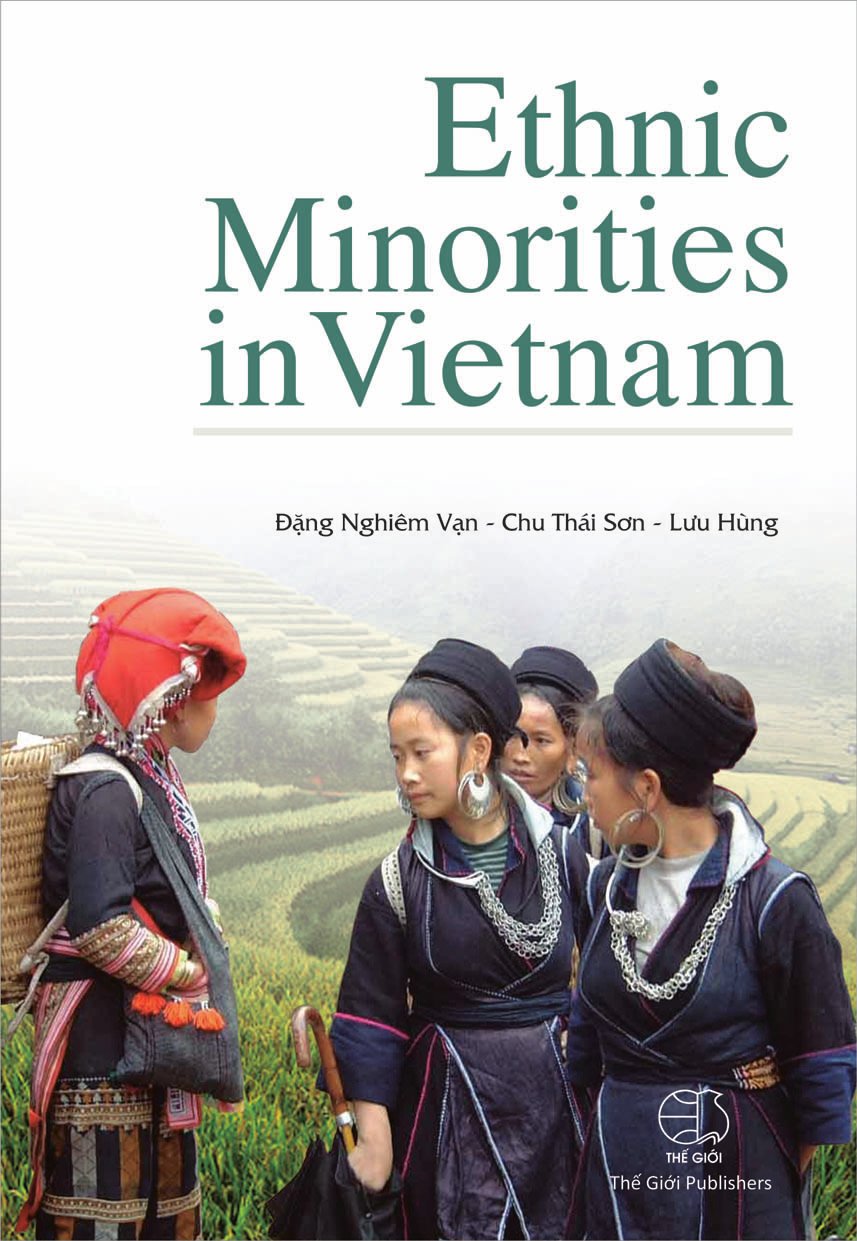Over the past 25 years since the first publication of the book Ethnic Minorities in Vietnam in 1984 by Foreign Languages Publishing House, now Thế Giới Publishers, Vietnamese society has entered the period known as Đổi Mới - a time of renovation and global integration.
These changes have had their impact on different aspects of the lives of ethnic minorities, from the deltas and plateaus to the mountainous regions and even very remote areas. In a system where production is unregulated, all goods, including agricultural products, become commodities. All natural resources-forests (together with their flora and fauna), cultivated land, rivers, lakes, and ponds-promptly become the property of an owner. Land becomes more precious than ever, and farmers must rethink what to do with their shrinking lands.
Traditional modes of agricultural production, such ascrop rotationandslash-and-burn agriculture once practiced by nomadic hill tribes, have given way to settled agriculture that, with the help of technological advances, enables the development of specialized agriculture, intensive agriculture, multi-cropping, and the cultivation of plants and animals of high economic value. Only in this way can the demands of a changing society be met.
In addition to slash-and-burn agriculture, people in other regions have focused on developing wet rice cultivation in the lowlands and terraced fields in the low hills.
Due to the changes occuring in population distribution, an increasingly mixed pattern of residence among neighboring ethnic groups and between the ethnic majority Kinh and local ethnic minority groups is inevitable. This will continue to narrow the “tribal territories,” that is areas in which particular tribes or local ethnic groups live in concentration. Fewer villages, and even fewer communes, contain residents from only one ethnic group. This leads to integration and cultural exchange among neighboring groups, as well as to mixed groups.
Extended families, or communal families, such as those dwelling in thelong houses of the Xê-đăng, Ê-đê, Cờ-ho, Mnông and Xtiêng peoples in the Central Highlands and southeastern regions of Vietnam, are breaking up, and the nuclear family, in which one couple settles down to create a family, has becomemore and more popular, irrespective of traditionalpatriarchal, or in some cases, matriarchal, family structures.
During the first decade of the 21st century, the Vietnamese government established many policies that placed priority on investments in the socioeconomic and cultural development of the highlands and other areas where ethnic minorities dwell. For instance, programs 134 and 135, along with other federal programs aimed at boosting production, alleviating poverty and improving education, have brought about some positive initial changes to rural and mountainous areas throughout the country.
Thanks to these projects, the transportation network in the mountainous areas has been gradually built up, improved and solidified. Today, cars can reach nearly every commune seat. The national power network has been extended to many villages in order to serve commercial and domestic needs. Educational institutions and medical stations have been built and equipped, and in many places, the irrigation system has been solidified, helping agriculture develop in a more sustainable way.
However, there have also been some side effects. Most of the traditionally self-sufficient handicrafts that once supplied household products, such as textile weaving, ceramics, forging, and the weaving of rattan and bamboo products, have been replaced by a growing trade with urban and industrialized regions. Thus, household expenditures among residents of the highlands have increased considerably.
During the past decades, spontaneous and uncontrolled-emigration by ethnic minority groups in the northern highlands in search of agricultural lands, such as the Hmông, Tày, and Nùng, have raised complex issues. Within the northern section of Vietnam, the Hmông have moved westwards and northwards. The Tày and Nùng have emmigrated southwards as far as Đắc Lắc and Lâm Đồng provinces. Their residences have become more scattered, and hence the opporunity for cross-ethnic exchange has greatly increased.
Cultural exchange between different ethnic groups, particularly with the ethnic majority Kinh, along with the growth of the mass media (in the form of newspapers, books, radio and TV stations) has exerted pressure on the ancient customs, gradually forcing some into oblivion. These include:
- The custom of early marriage practiced by many ethnic groups.
- The custom of kidnapping women for marriage (Háy Pù or wife stealing) among the Hmông.
- The custom of setting aside several days to offer sacrifices and feast beside the coffin of the deceased practiced by many ethnic groups.
- The custom of many women in local areas of sitting upright to give birth and cutting the umbilical cord with a bamboo knife.
- The superstition of the ma ngũ hái, or ma gà, or ma cà rồng (named differently depending on the ethnic group) that can be found in the mountainous provinces of the north and which can lead to serious crimes, such as murdering young women who are suspected of being possessed by the ghost.
- The superstition of the ma lai found in areas of the Trường Sơn mountain range and the Central Highlands, even more violent than the above-mentioned superstitions. Because of this belief, men who are suspected of being possessed by the ghost are brutally killed along with their entire family line, causing great damage to the villages. A stop was put to this appalling custom only in the 1990s.
- The custom of headhunting as part of the harvest prayer ceremony of the Cơ-tu people.
- The custom of “keeping the generation” (Chuê nuê) practiced by the Ê-đê (forcing widows to remarry while the deceased husband stills lies in state at home).
- The custom of filing teeth and stretching the earlobes practiced by many ethnic groups along the Trường Sơn mountain range, in the Central Highlands, and in the southeastern region of the country.
- The custom of exacting a bride price, found among many ethnic groups, including the Xtiêng (a subgroup of the Bule) residing in Bình Phước Province. This custom forces many poor young men to become permanent servants of the brides family in order to repay the debt incurred by the wedding.
- The Bru-Vân Kiều custom of the col (or khoi) ceremony held after a wedding in which a buffalo or bull must be sacrificed. Many elderly couples pass away without having performed the col ceremony, obliging their children or even grandchildren to conduct it for them in order for their spirits to be reunited with the family.
- The custom among the Xtiêng (a subgroup of the Bule), the Bru–Vân Kiều and a number of other groups of considering daughters-in-law as the “inheritable property” of the family. If a man passes away, his widow must marry his elder or younger brother, or if none is available, then his step son or even his father. These women are victims of the primitive practice of “transaction marriages.”
These are some of the harmful customs that have been abolished thanks to social improvements and cultural exchange. However, there are other distinctive, healthy cultural customs that have been pushed into extinction by this “modernizing movement.” Luckily, some still remain, and some even exist in partial form to a wide extent and have become part of local and even national heritage. For example, the pagodas and towers of the Chăm have been rebuilt, the most notable example being the architectural complex of Mỹ Sơn in Quảng Nam Province, which has been recognized as a site of World Cultural Heritage. Recently, the artistic and cultural space of gongs as practiced in the Central Highlands has also been recognized as an example of Intangible World Cultural Heritage.
During the past two recent decades, research on the popular literature and folk art of the ethnic minorities has developed and gained more attention. Much investment was spent on collecting, translating and interpreting the customs, historical records, and myths of ethnic minorities for the general public. Ethnic instruments, folk songs and dances have been studied, restored and performed at cultural festivals in many local areas.
Examples of traditional architecture, such as stilt houses, long houses, communal houses, the religious architecture of Khmer temples and Chăm pagodas, and the great pillars used in ceremonies practiced throughout the Trường Sơn mountain range and the Central Highlands have been preserved. Additionally, the diverse ethnic costumes, the different patterns used on traditional fabrics, the art of wood and sandstone sculptures, and the art of making and decorating pottery, rattan, and bamboo products have been brought together and displayed for both foreign and domestic audiences.
During the past 25 years, despite various lifestyle changes, the cultural character of the Vietnamese ethnic minorities and their relationship to the surrounding ecological environment have remained. These changes also do not affect these groups as a whole.
Unfortunately, the national population and housing census has not been able to report the population of all ethnic groups. In this edition, we are forced to continue using data from the the previous general population and housing census of 1999. However, the new administrative divisions mandated by the government have been updated in this publication.
Undoubtedly this book still contains areas for improvement, and we look forward to receiving comments and suggestions from readers.
Ngôn ngữ: tiếng Anh
Khổ sách: 14,5 x 20,5cm
Số trang: 298 trang

